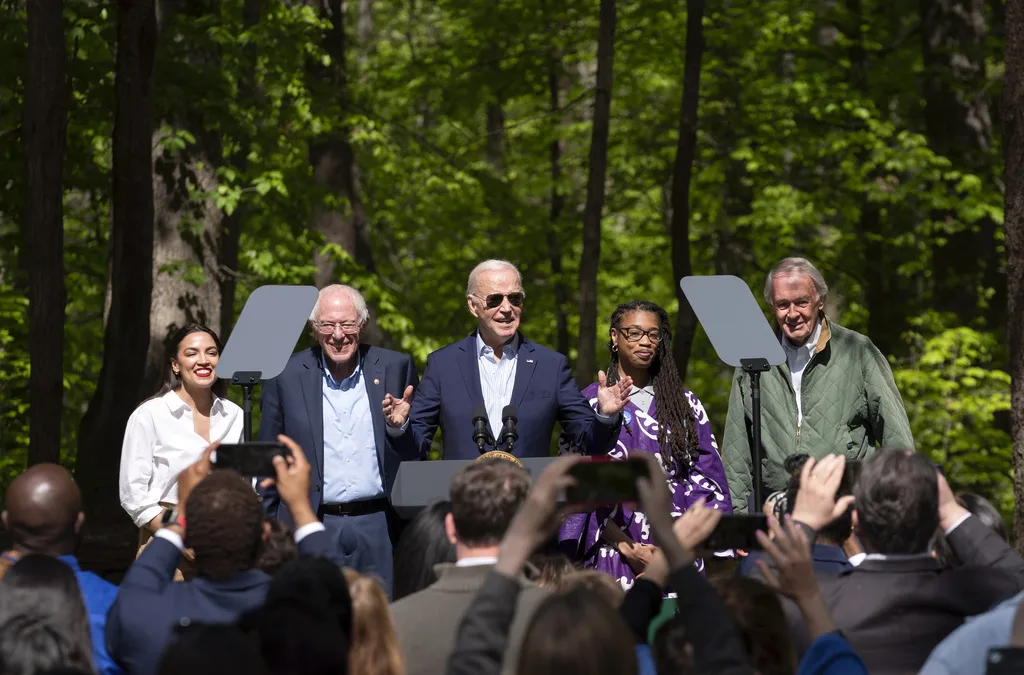
Carnegie Mellon University in Pittsburgh (Shutterstock)
Biden’s executive order will cancel $10,000 in debt for anyone who went to college and earns less than $125,000; $20,000 for borrowers who also received Pell Grants and meet the income threshold; and dramatically reduces monthly payments for low- and middle-income borrowers moving forward.
Tens of millions of Americans received life-changing news on Wednesday, as President Joe Biden finally announced his plan to cancel federal student loan debt, extend the moratorium on student loan payments again, and make systemic changes to ensure future repayment terms are far more fair for low- and middle-income borrowers.
The announcement, which came after months of deliberation, will provide immediate relief to countless Americans who’ve struggled with the financial albatross of student loan debt and help millions of future students avoid crushing monthly payments.
Here’s the breakdown of Biden’s plan, which he will implement via executive order and could face legal challenges from Republicans and conservative groups who want to do nothing to address the student debt crisis.
- $10,000 in debt canceled if you went to college and earned less than $125,000 (or $250,000 for a married couple) in 2020 or 2021
- $20,000 in debt canceled if you went to college, received Pell Grants (a form of federal financial aid for undergraduate students), and meet the income threshold
- The pause on student loan payments is extended through Dec. 31, 2022, so borrowers will not have to resume payments in September.
The amount of cancellation is capped at the amount of your outstanding debt, so if you are eligible for cancellation but have less than $10,000 in debt left (or less than $20,000 as a Pell grant recipient), the cancellation will amount to whatever you owe.
The order will apply to borrowers with federal loans from both undergraduate and graduate programs—meaning nurses and teachers will be eligible—as well as Parent Plus loans, according to the Wall Street Journal. The canceled debt will also reportedly be exempt from being taxed as income, but any loans must have originated before July 1, 2022, to qualify for cancellation.
Current and future lower- and middle-income borrowers on income-based repayment plans will also get further relief under Biden’s new rule. The order will:
- Limit what these borrowers with undergraduate loans must pay each month to no more than 5% of their discretionary monthly income (the amount left after paying for necessary expenses like rent, utilities, and food). The rate is currently 10%, meaning Biden’s rule will effectively cut these borrowers’ payments in half.
- Guarantee that no borrower earning under 225% of the federal poverty level—roughly $30,500 in 2022—will have to make monthly payments by raising the amount of income that is considered non-discretionary income.
- Cancel loan balances after 10 years of payments for borrowers with loan balances of $12,000 or less. Currently, these borrowers are ineligible for cancellation for 20 years.
- Cover borrowers’ unpaid monthly interest, so that borrowers do not accrue any interest on their balances as long as they make their monthly payments—even if it’s as low as $0 because their income is low.
The White House provided examples of how these new rules would help different kinds of Americans:
Biden’s move comes after years of activism from borrowers, lawmakers, and activists who have pointed out how the growing cost of college, which has roughly tripled since 1980—even after accounting for inflation—and stagnant levels of federal aid have forced students to take on burdensome loans that have now left many middle- and low-income families financially underwater and unable to start businesses, buy homes, or retire.
The average undergraduate student now graduates with roughly $25,000 in student loan debt, according to the US Department of Education (DOE). Even for those who graduate with less debt, the load can be crushing. In fact, roughly 16% of borrowers are in default—including roughly 750,000 senior citizens with student debt—which can result in the government garnishing a borrower’s wages or lowering their credit score.
Biden’s order is expected to provide direct financial relief to a substantial majority of the 43 million Americans with $1.6 trillion in federal student loan debt—nearly one-third of whom never finished their studies or obtained a degree due to the high cost.
That includes more than 1.8 million Pennsylvanians, who owe a combined $64.65 billion in student loan debt, according to recent data from the Education Data Initiative.
Of the Pennsylvanians carrying student loan debt:
- 405,100 borrowers aged 24 and younger owe an average of $15,996 each.
- 661,000 borrowers between the ages of 25 and 34 owe an average of $35,053 each.
- 447,200 borrowers between the ages of 35 and 49 owe an average of $46,377 each.
- 231,000 borrowers between the ages of 50 and 61 owe an average of $46,926 each (the most of any age group).
- 75,100 borrowers aged 62 and older owe an average of $45,539 each.
Under the rule, an estimated 20 million people are expected to be eligible to have their remaining debt fully canceled, with benefits overwhelmingly flowing to Americans earning under $75,000 per year.
The move is likely to be a popular one among ordinary Americans. Recent polling from Courier Newsroom and Data for Progress found that 58% of likely voters supported canceling at least $10,000 in federal student loans, with 63% supporting the same amount of cancellation for low- and middle-income borrowers.
According to the DOE, nearly 8 million borrowers may be eligible to receive automatic relief because relevant income data is already available to the agency. If the DOE does not have your income data, or if you’re unsure if they do, the Biden administration will be rolling out an application in the coming weeks, before the pause on federal student loan repayments ends on Dec. 31.
You can sign up for email notifications from the Department of Education once the applications are open.
Borrowers who work for nonprofits, the military, or federal, state, local, or Tribal governments may be eligible to have all of their federal student loans canceled through the Public Service Loan Forgiveness (PSLF) program because of temporary changes to the program’s eligibility criteria. These changes expire on October 31, 2022. For more information on eligibility and requirements, visit PSLF.gov.
Keystone associate editor Patrick Berkery contributed to this report.
Politics

Influencers and creators find new ways to engage young Philadelphia voters
Rec Philly, a space for creators and influencers, teamed up with Show Up Strong to get hundreds of young Philadelphia residents engaged in the...

New Biden rule protects privacy of women seeking abortions
Under the new rules, state officials and law enforcement cannot obtain medical records related to lawful reproductive health care with the goal of...

Biden marks Earth Day by announcing $7 billion in solar grants
The Biden administration on Monday announced the recipients of its Solar For All Program, a $7 billion climate program that aims to lower energy...
Local News

Conjoined twins from Berks County die at age 62
Conjoined twins Lori and George Schappell, who pursued separate careers, interests and relationships during lives that defied medical expectations,...

Railroad agrees to $600 million settlement for fiery Ohio derailment, residents fear it’s not enough
Norfolk Southern has agreed to pay $600 million in a class-action lawsuit settlement for a fiery train derailment in February 2023 in eastern Ohio,...






